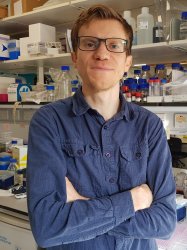BibTex format
@article{Mahen:2018:10.1371/journal.pbio.2003998,
author = {Mahen, RWJ},
doi = {10.1371/journal.pbio.2003998},
journal = {PLoS Biology},
title = {Stable centrosomal roots disentangle to allow interphase centriole independence},
url = {http://dx.doi.org/10.1371/journal.pbio.2003998},
volume = {16},
year = {2018}
}

